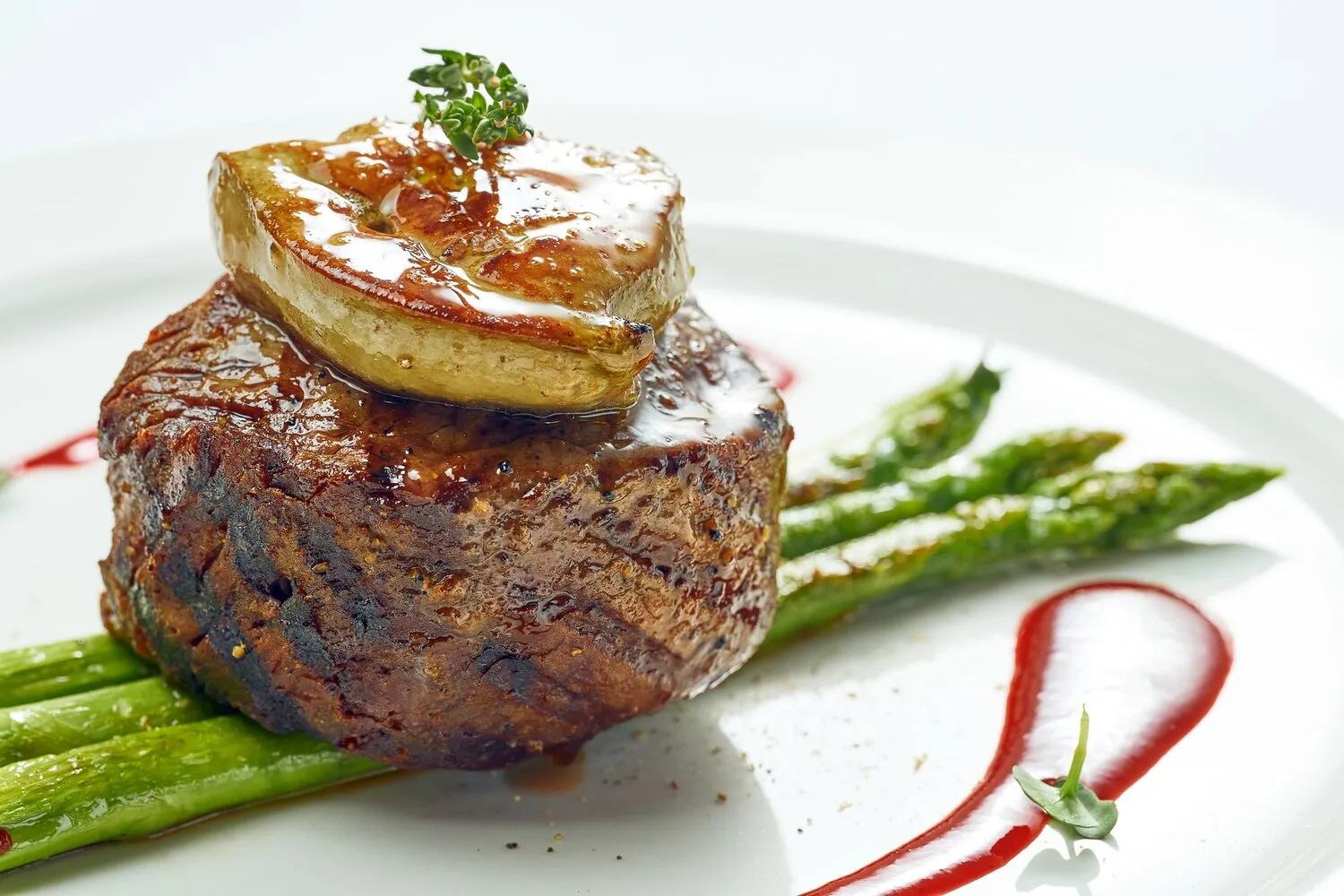
Ribeye Steak
A well-marbled ribeye steak, often mentioned in reviews as a highlight.
Nutrition Facts
* The % Daily Value (DV) tells you how much a nutrient in a serving of food contributes to a daily diet. 2,000 calories a day is used for general nutrition advice.
While beef consumption has ancient roots globally, the concept of grilling specific cuts like the ribeye to showcase their flavor and tenderness is more recent. American steakhouses popularized this practice, influenced by European butchering techniques and a growing appreciation for high-quality beef.
Ribeye steak is a symbol of celebration, indulgence, and American dining culture. It is often associated with steakhouses, special occasions, and a sense of premium quality.
Steakhouse Culture
Ribeye is a staple menu item in American steakhouses, often served as a centerpiece dish. Steakhouses are perceived as places for business lunches, romantic dinners, and celebratory events.
Grilling and BBQ
Grilling ribeye steaks is a popular backyard barbecue activity, signifying a casual yet indulgent social gathering.
Celebratory Meal
Ribeye steak is frequently chosen for special occasions, such as birthdays, anniversaries, and promotions, due to its perceived premium quality and satisfying nature.
The Ribeye steak boasts a rich, beefy flavor profile with a noticeable marbling of fat that contributes to its tenderness and juiciness. It is typically seasoned simply to allow the natural flavors of the beef to shine.
The dominant flavor is undeniably beefy, enhanced by the intramuscular fat (marbling) that melts during cooking, basting the steak from within. This fat contributes a buttery, savory richness. Seasonings like salt and pepper amplify the natural flavors. Some variations include garlic, herbs like thyme and rosemary, or a touch of smokiness from grilling or pan-searing.
Choosing the Right Cut
Look for ribeye steaks with ample marbling (intramuscular fat). The marbling is what renders and provides the flavor and moisture. A well-marbled steak will be more tender and juicy.
Seasoning
Simple seasoning is often best. Coarse kosher salt and freshly ground black pepper are typically sufficient. Season generously on all sides at least 30 minutes before cooking, or even better, the day before and let sit in the fridge.
Cooking Methods
Pan-searing, grilling, and reverse-searing are popular methods. For pan-searing, use a cast-iron skillet with high heat and butter/oil. For grilling, ensure the grill is hot. Reverse-searing involves cooking the steak at a low temperature in the oven until almost done, then searing it in a hot pan for a crust.
Resting the Steak
Allow the steak to rest for at least 10 minutes after cooking, tented loosely with foil. This allows the juices to redistribute, resulting in a more tender and flavorful steak.
Explore additional Steakhouse dishes and restaurants
Explore SteakhouseDiscover top dining spots and culinary experiences in Lubbock.
Explore LubbockLearn more about the food culture, restaurant scene, and culinary heritage of United States.
Explore United States